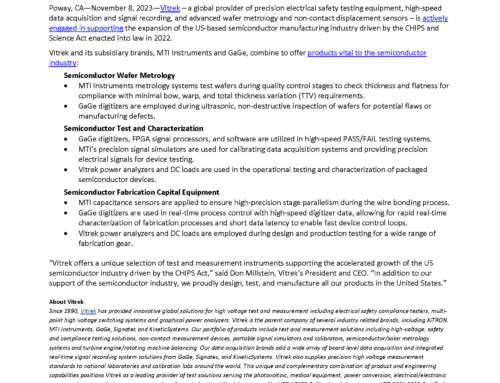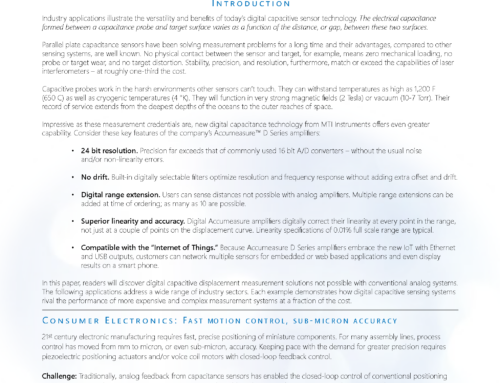Grinding Process
Description
A cylindrical grinding process finishes most wheel spindle surfaces. It is essential that this grinding process leave a surface finish that is smooth and free of defects with minimal runout. No grinder produces a perfect surface. Grinder wheel runout, improperly dressed wheels and fixture vibrations can cause chatter on the spindle surface finish. Chatter is a series of microscopic, repetitive imperfections, or waves, in the surface of the material being machined. The required production environment sensor must have small spatial resolution, high frequency response and large standoff distance for easy loading and unloading of parts. Additionally, the measurement accuracy had to be less than 4 micro-inches (0.1 microns) with a resolution of 1 micro-inch (0.025 microns), or better, in order to properly quantify the defects.

System noise had to be kept to a minimum in order to prevent unnecessary parts rejection and scrap. MTI provided several different tip designs utilizing either a radiussed or chamfered face in order to accommodate a number of different wheel spindle configurations. The probes were used in conjunction with the Accumeasure 9000, an ultra high-resolution capacitance amplifier. Built in digital displays quickly alerted the operator in real time of the test results.



